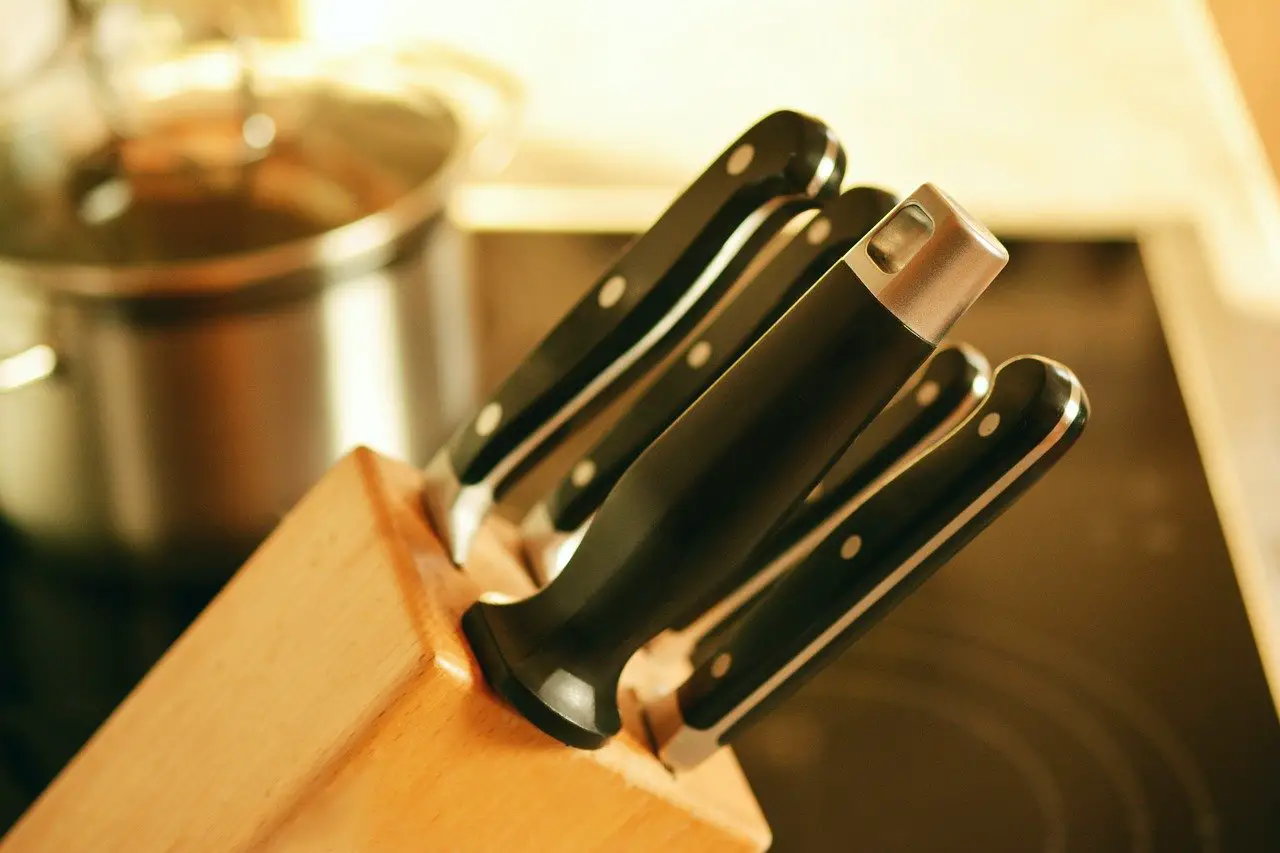
Whether you are buying a knife for the first time or just want to upgrade your knife set at home, it can sometimes be difficult to know what to choose. There is a very wide selection of different knives, but how do you know which knives to invest in and what you actually use them for?
If you want to buy a good set of knives that solve most things in the kitchen, you should invest in a chef’s knife, a vegetable knife, a peeler knife, a fillet knife, and a bread knife.
But which brand, model and material to choose is completely individual. Then, of course, it also depends on how much money you are willing to spend. There are many good affordable alternatives today, but the price usually reflects the quality.
Steel or ceramic knife?
The two most common types of knives are steel knives and ceramic knives. Forged knives have a wedge-shaped blade, shims, and finger protectors while the other common type of steel knives are thinner and straighter. Ceramic knives are harder and lighter than steel knives. They last longer, but easier to break if you drop them. Ceramic knives also do not react to acidic substances.
Steel
The quality of steel can vary greatly. The knives that are labeled as stainless contain a small proportion of carbon, as well as chromium that increases rust protection. But the blades are relatively soft. Harder knife blades contain a larger proportion of charcoal and thus roast more easily – but last longer. HRC is a measure of steel hardness. It is not always on the packaging but should be around 58-59 if you want a really good knife. The price is often associated with the hardness: The better steel the more expensive knife. In return, the knife lasts a lifetime – if you take care of it properly.
Chef’s knife
If you want a good knife in the kitchen, to begin with, it is a chef’s knife you should have – it is good for most things. With it, you can cut, chop and dice everything from meat and poultry to vegetables and root vegetables. A chef’s knife has a wide blade and is slightly curved along the edge. A chef’s knife can vary quite a lot in length but is usually somewhere between 15-30 cm.
Vegetable knife
If you cut a lot of vegetables and want a knife that is a little smaller and smoother than a real chef knife, you can invest in a good vegetable knife. However, vegetable knives can look very different, there are those that are quite tall and those that are a little heavier to hold firmly in your hand when chopping, then there are also smaller and lighter varieties that are particularly suitable for cutting tomatoes, for example. A vegetable knife often has a knife blade that is between 9 – 18 cm long.
Ceramic knifes
Ceramic knives are very hard and last for a very long time. However, one must be careful about cutting into hard things such as bones or frozen foods. In addition, a ceramic knife is very sensitive to impact, so there is a risk that it will break if, for example, you drop it on the floor. One advantage of ceramic knives is that they can usually be washed in a dishwasher.
Paring knife/kitchen knife
The pairing/kitchen knife is the smallest knife in the knife family. Its size makes it smooth and good for peeling and dividing fruits and vegetables – perfect for the smallest ingredients such as garlic or chili. A pairing knife has a knife blade that is about 8 – 15 cm long.
Bread knife
A bread knife has a really long, toothed blade that is created to easily pass through airy materials without mashing them. A bread knife is also good for cutting tomatoes or tranching baked dishes. A bread knife often has a knife blade that is between 20-25 cm.
Fillet knife
A fillet knife has a narrow, flexible blade that allows it to reach under the fish or chicken skin and cut out fine fillets. Thanks to the blade’s pointed tip, the fillet knife is also good for cleaning up steaks. A fillet knife can vary in size but is usually between about 15-22 cm.
Special Knives
For those of you who are not satisfied with a basic range of standard knives, but want a knife for a special assignment, which means that you should open oysters, you can also invest in a special knife.
Oyster knife
Small but powerful knife blade that can get into the oyster.
Santoku knife
A versatile knife with a straight edge that is suitable for both cutting and chopping.
Trencher knife
To tranch, ie cut up, meat. The discs become thin and even thanks to the smooth blade.
Cleaver
Very similar to the meatloaf but adapted to chop vegetables and fresh herbs.